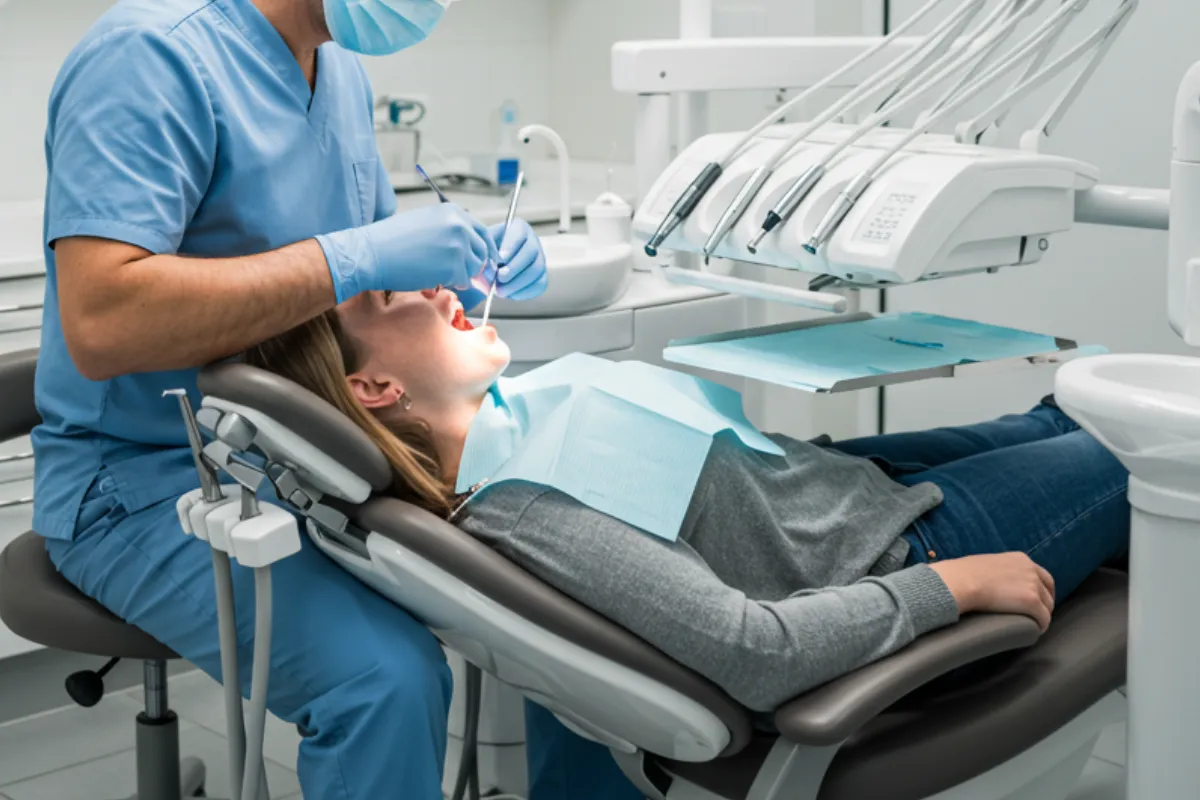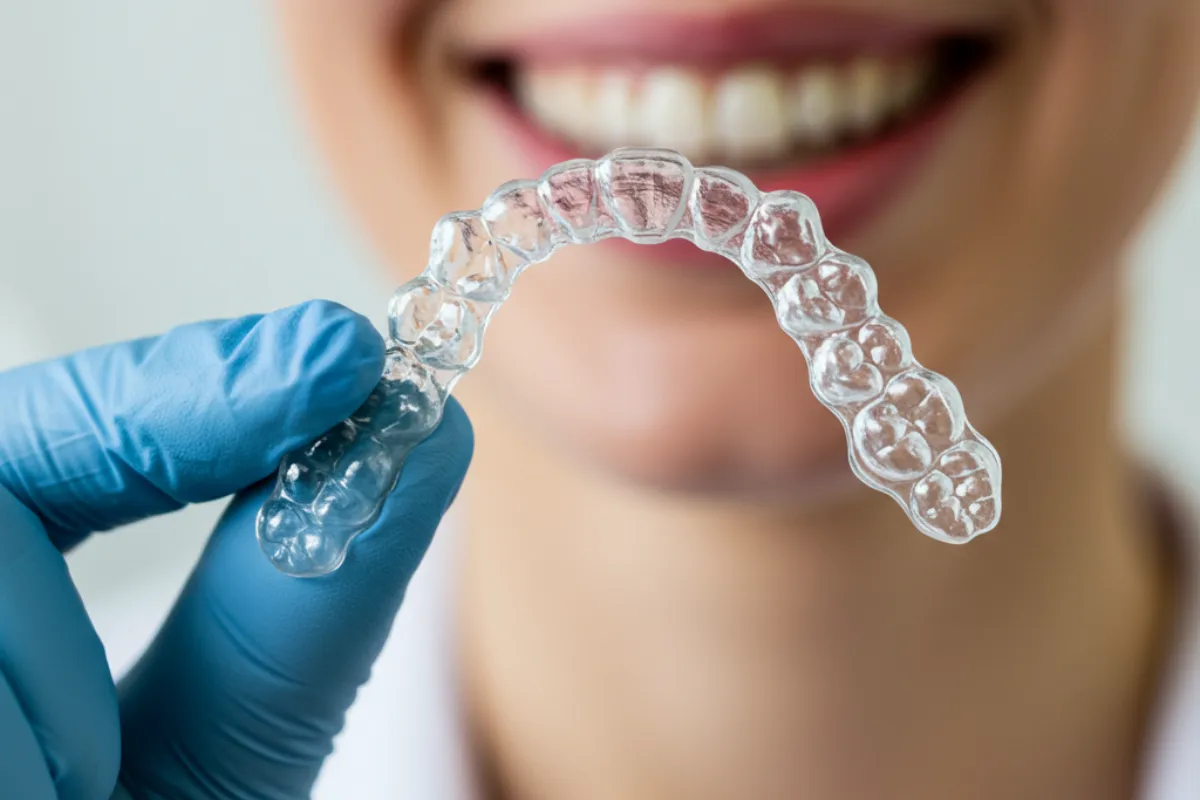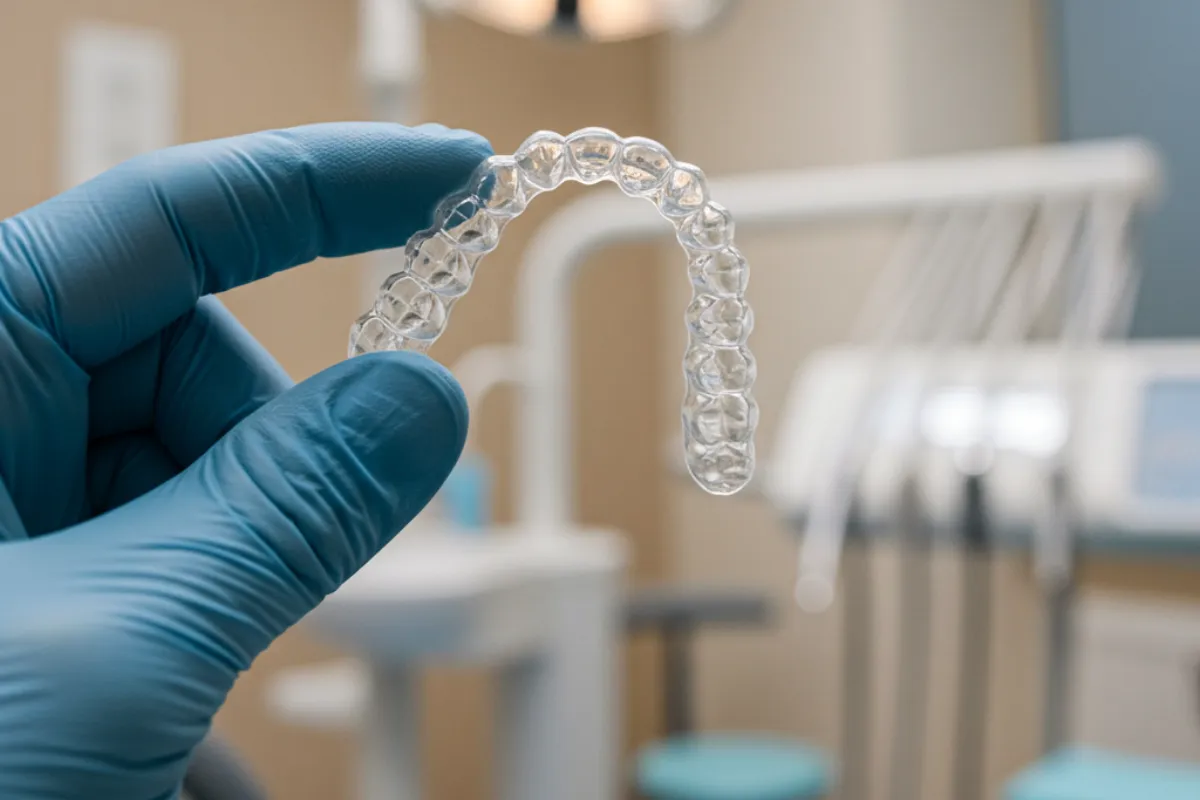The Surprising Link Between Diet, Jaw Growth, and Dental Health

The Evolution of Our Jaws: A Historical Perspective
When we look back at our distant ancestors, a fascinating trend emerges: ancient human skulls typically display broad, well-developed jaws and straight teeth. Archaeological discoveries from various periods indicate a striking absence of dental crowding or misalignment, which is so common today. This wasn’t a fluke of genetics or luck. Instead, it was a direct result of the foods they ate and the way their jaws developed in response.
Early humans consumed a diet rich in unprocessed, fibrous foods—think roots, nuts, raw vegetables, and tough meats. The act of chewing these foods placed healthy stress on the jawbones during childhood, stimulating proper growth and expansion. As a result, their jaws developed wide and strong, leaving ample room for all 32 adult teeth.
Contrast that with what we see now: modern skulls, especially those from urbanized populations, often have noticeably smaller jaws and crowded teeth. Crowding, overbites, and impacted wisdom teeth are much more prevalent today. These differences didn’t emerge overnight; they are the result of thousands of years of gradual dietary and lifestyle changes.
Understanding this evolutionary journey helps shed light on why crooked teeth have become so widespread in the present day. It’s not merely a matter of luck or genetics—it’s deeply connected to how our daily habits have shifted over time.
From Ancient Diets to Modern Meals: What Changed?
The transformation of our diets over the millennia has had a profound impact on our oral health. Our ancestors’ meals required a significant amount of chewing, as they were filled with raw plants, tough meats, and unprocessed grains. Not only did this chewing exercise the jaw muscles, but it also placed enough pressure on the growing bones to encourage them to widen and develop fully.
With the advent of agriculture, people began consuming more cooked grains and softer foods. However, it was the industrial revolution that dramatically altered the texture and consistency of our diets. The widespread availability of refined flour, processed sugar, and convenience foods meant that meals became much easier to chew. Packaged snacks, breads, pastas, and sugary cereals became dietary staples, especially for children.
As a result, children’s jaws were no longer being exercised to the same degree. The softer food required less effort to eat, leading to underdeveloped jawbones and a reduction in the natural space for teeth. This trend has continued to the present day, where the modern diet is dominated by foods that require minimal chewing.
The link between what we eat and how our jaws develop is now well established in dental research. Diets lacking in texture and resistance during childhood are a major factor in the rise of dental crowding, misalignment, and the need for orthodontic care. By understanding these dietary changes, we can begin to address the root causes of many common dental issues.
Why Jaw Development Matters for Dental Care
Jaw development plays a crucial role in the overall health and function of our mouths. When the jaws grow to their full genetic potential, there’s enough space for all permanent teeth to erupt in alignment. This results not only in a more aesthetically pleasing smile but also in proper bite function and easier maintenance of oral hygiene.
However, when the jaw doesn’t develop fully—often due to a lack of chewing tough foods or certain childhood habits—several issues can arise. Crowded teeth are more difficult to clean, increasing the risk of cavities and gum disease. Misalignment can also put extra stress on the jaw joints, potentially leading to discomfort, jaw pain, or even temporomandibular joint (TMJ) disorders.
Beyond dental appearance and comfort, the shape and size of the jaw can affect overall health. Narrow jaws can restrict the airway, contributing to mouth breathing and even sleep-disordered breathing, such as snoring or sleep apnea. These problems are linked to a range of health concerns, from daytime fatigue to learning difficulties in children.
For dental professionals, understanding jaw development is essential to providing comprehensive care. Early assessment and intervention—often beginning in childhood—can help guide jaw growth and reduce the need for more extensive orthodontic or restorative treatments later in life. This proactive approach supports not just straighter teeth, but also improved overall health and well-being.
Common Habits Affecting Children's Oral Health Today
While diet plays a significant role in jaw and dental development, a range of everyday habits also impact children’s oral health. Modern lifestyles have introduced several behaviors that can unintentionally hinder healthy jaw growth.
Prolonged bottle-feeding and extended pacifier use—common comforts for infants—can, if continued too long, apply unnatural pressure on the developing jaws and teeth. This may result in misalignment, open bites, or other orthodontic issues. Similarly, thumb sucking, if it persists beyond the toddler years, can change the shape of the dental arch, leading to crooked teeth and bite problems.
Mouth breathing, often a result of nasal congestion or allergies, is another concern. Breathing through the mouth rather than the nose can alter jaw and facial development, frequently resulting in narrower jaws and increased risk of dental crowding. Additionally, mouth breathing dries out the oral tissues, raising the risk of cavities and gum disease.
Even factors such as a sedentary lifestyle and poor posture—often exacerbated by screen time—can influence the way facial bones grow. Slouched posture can affect the alignment of the spine, neck, and jaw, subtly impacting oral and facial development over time.
By recognizing these habits early and encouraging healthier alternatives, parents and caregivers can help set the foundation for better oral health outcomes. Regular dental check-ups and guidance from dental professionals can also play a key role in identifying and addressing these risks before they become bigger problems.
The Consequences of Misaligned Teeth: Beyond Appearance
Misaligned teeth are often viewed primarily as a cosmetic concern, but the implications extend far beyond appearance. One of the most immediate issues is the increased difficulty in maintaining oral hygiene. Crooked or crowded teeth create tight spaces that are hard to clean with regular brushing and flossing, allowing plaque and bacteria to accumulate. This raises the risk of developing cavities and gum disease, both of which can have serious long-term consequences for dental health.
Additionally, misalignment can affect the way the teeth and jaws come together when biting or chewing. An improper bite can place excess stress on the jaw joints and muscles, leading to discomfort, headaches, or temporomandibular joint (TMJ) disorders. Over time, these issues can escalate, affecting daily comfort and quality of life.
Dental crowding and certain bite problems can also contribute to breathing difficulties. When teeth and jaws are out of alignment, the airway may become more restricted, increasing the likelihood of mouth breathing or sleep-disordered breathing conditions like snoring or obstructive sleep apnea. These issues can impact sleep quality, energy levels, and overall health.
Finally, the appearance of misaligned teeth can influence self-esteem and social interactions for both children and adults. Confidence in one’s smile often translates to greater comfort in social and professional settings. Addressing misalignment through early intervention and proper dental care not only benefits oral health but also supports overall well-being and confidence.
Promoting Healthy Jaw Growth in Kids and Teens
Supporting healthy jaw development in children and teens requires a combination of nutrition, habits, and regular check-ups. One of the simplest yet most effective strategies is to incorporate crunchy, fibrous foods into daily meals. Raw carrots, apples, celery, and other fresh fruits and vegetables require more chewing, which helps exercise the jaw muscles and stimulate bone growth.
Beyond diet, encouraging regular physical activity and maintaining good posture can aid in overall skeletal development, including the face and jaws. Physical movement and upright posture help ensure proper alignment of the head, neck, and jaw, reducing the risk of structural issues as children grow.
Breathing habits also play a significant role. Teaching children to breathe through their noses rather than their mouths supports optimal facial and jaw development. Nasal breathing filters, warms, and humidifies the air, while also promoting the proper position of the tongue against the roof of the mouth—a key factor in encouraging the upper jaw to grow wide and strong.
Limiting the intake of soft, processed foods is equally important. While occasional treats are part of childhood, making whole, minimally processed foods the norm can have lasting benefits for jaw development and overall health.
Regular dental visits ensure that any potential issues are identified early. Dentists can assess jaw growth, recommend interventions if necessary, and provide guidance on maintaining healthy oral habits at home. Early attention to these factors can set children and teens up for a lifetime of healthy smiles.
Simple Lifestyle Habits for Stronger Smiles
Building and maintaining strong, healthy smiles is rooted in everyday choices. Start by making whole, unprocessed foods a regular part of your family’s diet. Foods that require active chewing—like raw vegetables, fruits, and whole grains—provide the jaw with the stimulation it needs to develop properly, especially during the growing years.
Good oral hygiene habits should begin as soon as the first tooth appears. Brushing twice daily with fluoride toothpaste, flossing once a day, and regular dental check-ups create a solid foundation for oral health. These routines help prevent cavities, gum disease, and other common dental problems.
Reducing the frequency of sugary snacks and drinks is also crucial. Sugar fuels the bacteria that cause cavities, and frequent snacking increases the exposure of teeth to acids that can erode enamel. Encouraging children to drink water and to enjoy sweet treats in moderation can make a significant difference.
Engage children in mindful eating by encouraging them to take their time, chew thoroughly, and use all their teeth. This not only aids digestion but also provides the necessary exercise for healthy jaw development. Addressing oral habits such as thumb sucking or prolonged pacifier use early on can prevent misalignment and other developmental issues.
By incorporating these simple habits into daily life, families can help ensure their children develop strong, healthy jaws and beautiful smiles that last a lifetime.
How Dental Professionals Support Restorative Dentistry and Oral Health
Dental professionals play a pivotal role in supporting oral health, from the earliest stages of jaw development to the restoration of damaged or missing teeth. Regular dental check-ups allow for the early assessment of jaw growth and dental alignment in children, making it possible to detect potential problems before they become more serious.
Preventive care—including professional cleanings, dental sealants, and patient education—forms the foundation of lifelong dental wellness. Dental teams provide guidance on effective brushing, flossing, and dietary choices that support both healthy teeth and strong jaws.
When issues such as cavities, dental trauma, or misalignment arise, restorative dentistry comes into play. This branch of dental care focuses on repairing and restoring teeth to their optimal function and appearance. Treatments can range from simple fillings to more advanced procedures like crowns, bridges, and dental implants. Skilled dental professionals also perform oral surgery and endodontic treatments (root canals) when necessary, ensuring comprehensive care for patients of all ages.
Collaboration is key: dental professionals often work alongside pediatric specialists, orthodontists, and other healthcare providers to deliver holistic care tailored to each patient’s needs. This integrated approach not only addresses immediate dental concerns but also supports the structural integrity and aesthetic of the smile for years to come.
Empowering Families in North Vancouver: Steps for Lifelong Dental Wellness
Lifelong dental wellness is a journey that begins at home and is strengthened by a supportive community. Early and regular dental visits are crucial—not just for detecting problems, but for building trust and familiarity with dental care right from childhood. These appointments provide opportunities to catch developmental concerns early and to reinforce positive habits.
Families play a central role in promoting healthy eating and oral care routines. Preparing balanced meals that include plenty of crunchy fruits and vegetables, modeling good brushing and flossing techniques, and making oral health a shared priority all contribute to stronger, healthier smiles.
Open communication with dental care providers is essential. Don’t hesitate to ask questions or seek advice on topics ranging from preventive care to restorative treatments or orthodontic options. Dental teams are valuable partners in educating and empowering families to make informed decisions.
Staying informed about new advances in dental care, including pediatric dentistry, restorative solutions, and teeth whitening, ensures that families can access the best possible care for every stage of life. By fostering a proactive and positive attitude toward dental health, the North Vancouver community can help ensure that everyone—children, teens, adults, and individuals with special needs—enjoys the benefits of healthy, confident smiles.
Taking these steps together, families and dental professionals can create a strong foundation for oral health that lasts a lifetime.






